Humerus and Scapula: Posterior View 408
Note the insertion of Triceps Mm on the olecronon of the Ulna
Shoulder: Anteroposterior Radiograph

Shoulder Glenohumeral Joint 411
Coracoclavicular ligament: Conoid ligament and the trapeziod ligament
Coracoacromial Ligament
Coracohumeral ligament
Capsular ligament
Subscapularis tendon contributes anteriorly
Suprascapularis tendon contributes superiorly
Infraspinatus tendon fused to the capsule
Teres minor tendon fused to capsule
The Subdeltoid bursa fuses with the subacromial bursa
The Glenoid Cavity of the Scapula
Muscles of the shoulder 411
Posterior view 411:
- Spinous process of C7 vertebra is a landmark
- Levator Scapulae
- Rhomboid Muscles: minor superior then the major inferior
- What does the supraspinous muscle do?
- The teres minor muscle snuggles between the Infraspinous and the Teres Major muscle
- Again I only see the long head and lateral head of triceps muscle
Anterior View Muscles of the shoulder 411
Trapezius muscle beautifully covers the acromion and the lateral clavicle
Look at the Omohyoid Muscle deep to Trapezius muscle and the Sternocleidomustoid muscle
The Pectoralis Major has 3 parts: the clavicular part, the Sternal part and the abdominal part
Biceps Brachii has a Long lateral head and a short medial head
Axilla Posterior Wall and Cord 412
Brachial Trunks: Superior, Middle and Inferior emerge deep to the both Pectoralis muscles, and inferior to the clavicle and subclavious muscle
It is superficial to Mm Supraspinatus, and Mm Subscapularis
The Posterior Cord gives off the Upper Subscapular Nerve, the Thoracodorsal Nerve and the Lower Subscapular Nerve - it then becomes the Radial Nerve.
The Axillary nerve gives a branch to the Teres Minor Muscle and Superior Lateral Brachial Nerve, Posterior and anterior branch to Teres Minor Muscle
Well done C Machado MD
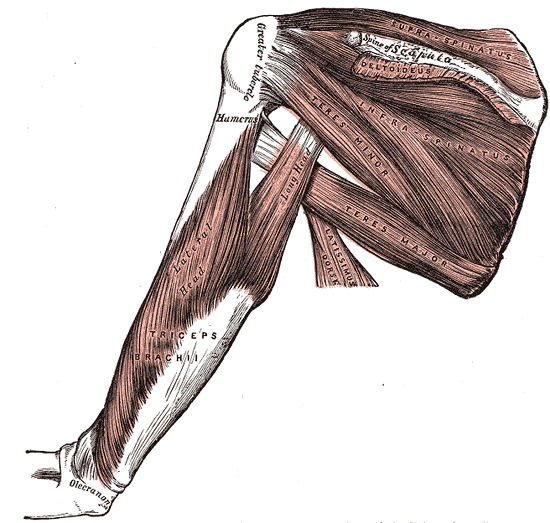

 |
Front of the left forearm. Superficial muscles. |
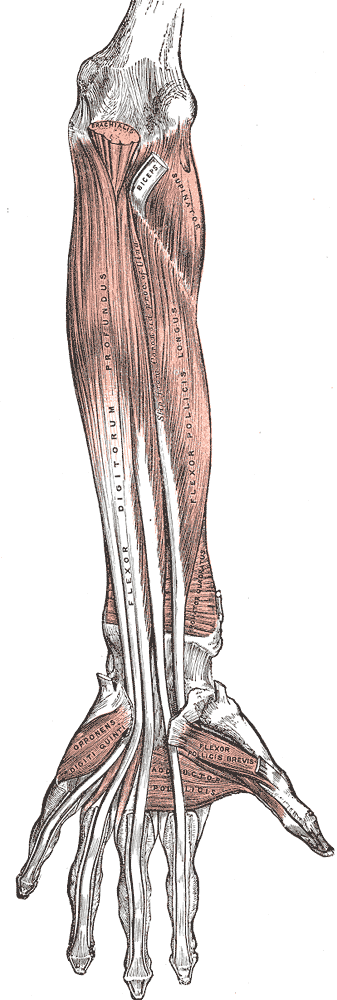
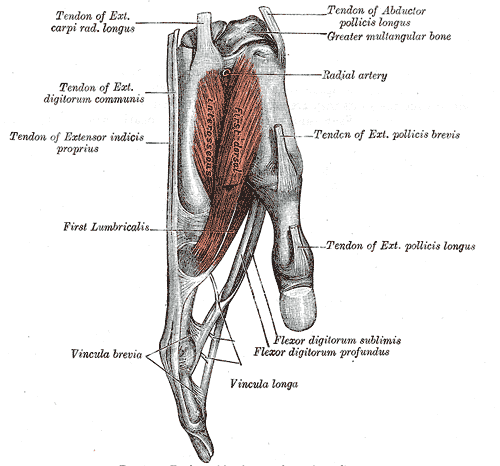
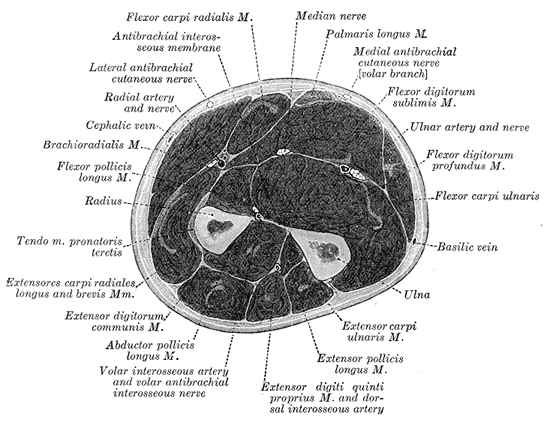

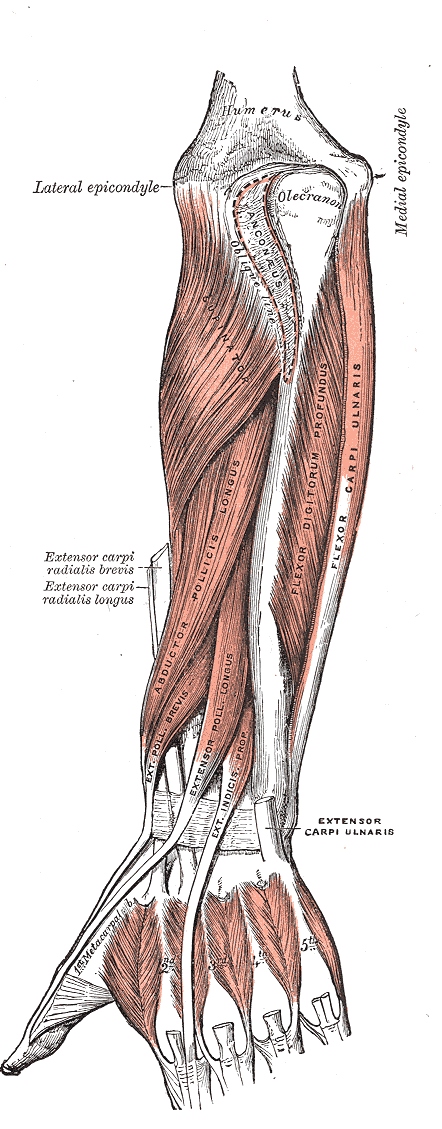

The triangle of ausculation of the lungs is a relative thinning of the musculature of the back situated along the medial border of the scapula.
Function
Due to the relative thinning of the musculature of the back in the triangle, the posterior thoracic wall is closer to the skin surface, making respiratory sounds able to be heard more clearly with a stethoscope.
To better expose the floor of the triangle, which is made up of the posterior thoracic wall in the 6th and 7th intercostal space, the patient is asked to fold their arms across their chest, medially rotating the scapulae, while bending forward at the trunk.
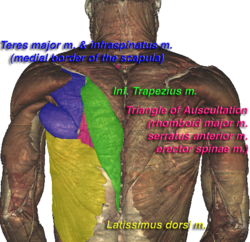
Shoulder Anterior
The shoulder comprises the part of the body where the humerus attaches to the scapula and refers to the group of structures in the region of the joint. The articulations between the bones of the shoulder make up the shoulder joint. Thesethree bones are: the clavicle (collarbone), the scapula (shoulder blade), and the humerus. The glenohumeral joint is the main joint of the shoulder. It is a ball and socket joint that allows the arm to rotate in a circular fashion or to hinge out and up, away from the body. It is formed by the articulation between the head of the humerus and the lateral scapula The main superficial muscles around the shoulder are the deltiod group, rotator cuff and pectoralis major muscles. The rotator cuff is an anatomical term given to the group of muscles and their tendons that act to stabilize the shoulder, the muscles are Supraspinatus, Infraspinatus, Teres minor and the Subscapularis. The pectoralis major muscle is a thick, fan-shaped muscle, situated at the upper anterior of the chest wall. It makes up the bulk of the chest muscles in the male and lies under the breast in the female. The deltoid muscle group has three sets of fibres anterior, middle and posterior they act to both abduct the arm and stabilise the dhoulder joint. |
Clavicle
The clavicle is a long bone that makes up part of the shoulder girdle. It acts as a shunt to keep the scapula in position so the arm can hang freely. Medially it articulates with the manubrium of the sternum at the sternoclavicular joint. At its lateral end it articulates with the acromion of the scapula at the acromioclavicular joint. The entire region is prone to injury and good knowledge of this area will help the radiographer decide which views will demonstrate the injury the best ie Shoulder views, Clavicle views, AC joint or SC joints. |
Shoulder Posterior
The scapula forms the posterior part of the shoulder girdle, it is a flat bone, roughly triangular in shape,placed on a posterolateral aspect of the thoracic cage. The medial border of the scapula is a commonly used landmark f |




Tidak ada komentar:
Posting Komentar